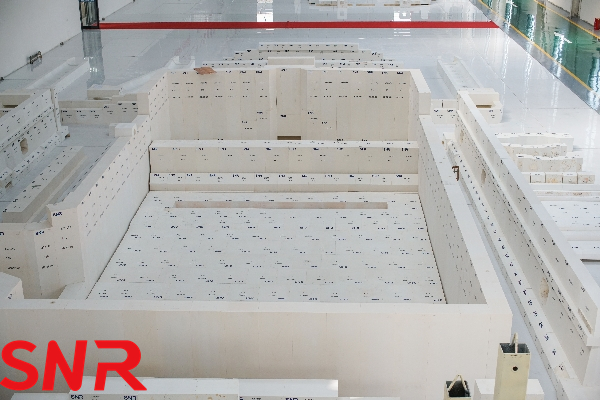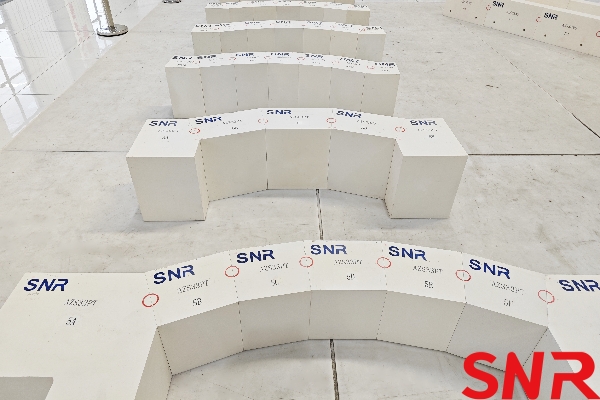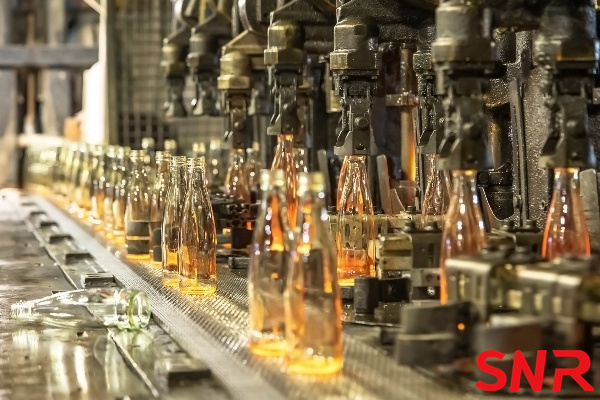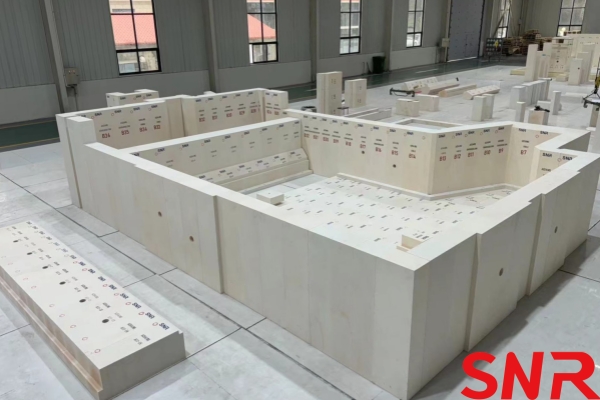Oxy-fuel combustion technology, a significant innovation in the glass industry, is increasingly replacing traditional air-fuel methods due to its energy efficiency and low emissions. However, furnace lifespan remains a critical challenge for widespread adoption. By examining key factors—including design, materials, construction, and operation—it proposes standardized, scientific, and systematic approaches to extend service life through advanced materials and processes. The findings offer theoretical and practical insights for optimizing oxy-fuel furnace performance, supporting the industry’s green transition.
1. Characteristics of Oxy-Fuel Combustion Technology
2. Applications of Oxy-Fuel Combustion Technology
Oxy-fuel combustion (also known as pure oxygen combustion) utilizes a fuel + oxygen combustion mode. Compared to traditional air-fuel combustion in glass furnaces, this technology eliminates the involvement of large amounts of nitrogen from the combustion air, making energy savings more achievable. Additionally, it results in lower initial NOx emissions, easier pollution control, and more predictable outcomes.
This is due to its outstanding performance in:
Environmental protection
Currently, oxy-fuel combustion technology has been widely adopted in China across industries such as metallurgy, power generation, chemicals, building materials, and processing.
2. Applications of Oxy-Fuel Combustion Technology
In China, oxy-fuel furnaces were first applied in display devices (CRT) in 2001, with most early technologies being imported from abroad. However, the real expansion of this technology occurred in electronic glass-ceramics. Today, oxy-fuel combustion is used in the production of:Glass-ceramics;High borosilicate glassware;High-alumina glass (e.g., cover glass);Pharmaceutical glass (low/medium borosilicate glass);Soda-lime glass (yellow tint);Optical glass;Solar photovoltaic glass;Electronic materials;Low-melting-point glass;Lead-free glass (lighting);Glass wool;High-lead glass;Glass microspheres;Fiberglass;Ceramic & enamel glazes;Daily-use bottles & containers;Water glass (sodium silicate);Basalt fiber.Advantages of Oxy-Fuel Combustion:
(2)Enhanced product quality (especially for products requiring specific combustion conditions, such as high temperature, atmosphere, or color—where traditional air-fuel furnaces struggle)
(3)Effective NOx reduction solution
(4)Compliance with carbon emission regulations(some regions mandate oxy-fuel for new production capacity approvals due to environmental policies).
2.1 Service Life of Oxy-Fuel Glass Furnaces
2.1.1 Normal Furnace Lifespan
The industry has established conventional benchmarks for furnace lifespans. Meeting these benchmarks is considered acceptable—for example, opaque glass furnaces are generally expected to operate for 18 months.2.1.2 Key Factors Affecting Furnace Lifespan
(1) DesignFurnace design is a systematic engineering task, involving:
Mechanical and thermal calculations
With tightening environmental policies, exhaust gas treatment must also be integrated into the design framework.
A comprehensive design should cover:Process layout, furnace dimensions, and energy distribution;Flame space optimization, length-to-width ratio;Molten glass/combustion gas flow velocities;Refractory material specifications (size, type, quantity);Steel structure design;Control systems (e.g., DCS);Burner selection and configuration;Electrical component specifications;Process control points and adjustment protocols;Furnace construction, installation, heat-up, and insulation;Environmental protection systems;Pre-project feasibility studies (EIA, safety assessments);Post-commissioning technical support and process optimization.
Current Industry Issues:Some domestic companies undervalue design, opting to copy existing blueprints. This approach risks stunting technological progress and industry competitiveness.


Special Considerations for Oxy-Fuel Furnaces:
Due to differences in combustion space temperature, melting rate, and flue gas moisture concentration (vs. air-fuel furnaces), high-quality fused cast AZS materials from reputable manufacturers are critical.
Throat (flow channel)
Doghouse corners


Safety protocols
(4) Process Regime
The establishment of a sound process regime is not only critical for ensuring stable product quality, rational energy consumption indicators, and environmental compliance, but also serves as a key factor in extending furnace service life.
Key components of the process regime include:
Energy distribution
A competent design team should develop a preliminary process protocol during the furnace design phase. This protocol must then be continuously refined based on operational data and production challenges until a finalized, optimized regime is established.
(5) Operation
To achieve extended furnace campaign life, proper operation and usage are equally critical alongside the aforementioned factors.
As a key indicator of glass furnace productivity, the melting rate is prioritized by both design institutes and end-users. Determining an optimal melting rate requires comprehensive evaluation of multiple factors:
Product specifications
Batch formulation
Cullet ratio
Furnace structure
Glass quality requirements
Refractory material selection
Ancillary equipment configuration
Industry Challenges:
While design institutes typically propose conservative yet realistic melting rate targets, some may overstate capabilities amid intensifying market competition.
Plant operators, under market pressures or profit-driven motives, often arbitrarily increase pull rates.
Without corresponding upgrades to furnace dimensions or combustion technology, such practices typically involve:
Modifying batch recipes
Raising melting temperatures
(6)Batch Material Changes
Expertise Required:
Temperature ramp rate control
(8) Cooling Systems
Integrated design calculations (heat flux, cooling capacity)
A well-designed cooling system reduces long-term energy losses by maintaining refractory integrity and minimizing repair downtime.
(9) Routine Maintenance
Timely interventions: Address minor anomalies before they escalate
Critical Warning Signs Requiring Immediate Action:
• Flame breakthrough
• Batch material squeezing
• Refractory glowing
2.1.3 Key Strategies for Optimal Furnace Lifespan
To scientifically and rationally evaluate furnace lifespan, it is essential to adopt a "refractory consumption per ton of glass" mindset. While a longer furnace lifespan is generally desirable, its design and management must balance multiple factors:Construction costs
Blindly pursuing an ultra-long lifespan without considering these factors may lead to diminishing returns and market rejection.
Critical Action:Proactively reduce melting rates during the furnace’s later stages to mitigate failure risks.
(3) Hazards of Forced Melting
Overheating the pre-melting zone
Industry Warning:
Short-term output gains often lead to higher lifetime costs from premature repairs or rebuilds.
3. How to Improve Furnace Service Life
3.1 Standardization
 (1) To achieve an ideal furnace service life, the owner must first select a design institute with proven experience and track record, firmly believing that good products stem from good design.
(1) To achieve an ideal furnace service life, the owner must first select a design institute with proven experience and track record, firmly believing that good products stem from good design.3.2 Scientific Operation
When operating oxy-fuel furnaces, operators must first abandon conventional mindsets. Respect the inherent principles of oxy-fuel technology and strictly follow operating procedures.3.3 Systematic Approach
A holistic consideration must be given to design philosophy, material and equipment selection, operational contingency plans, and process control, with balanced resource allocation. Simply increasing investment in one area to address a particular issue should be avoided.3.4 Innovation
The application of new materials, technologies, and processes forms the foundation for broader adoption of oxy-fuel furnaces in the future.Key developmental directions include:Many of these emerging technologies promise revolutionary improvements in extending furnace service life, making them highly anticipated advancements.
4. Outlook
Design solutions
The application of new technologies, materials, and processes demands a scientific and rigorous approach, where technological innovation becomes the key driver for extending furnace longevity.


Henan SNR Refractory Co., Ltd. has been specializing in the production of fused cast AZS blocks for about 25 years. We use high-quality raw materials and advanced fusion technology to provide customers with high-quality products. From raw material procurement to finished product delivery, every step is strictly quality inspected to ensure that every indicator meets the standards, so you can use it with confidence.



 Web:www.snr-azs.com
Web:www.snr-azs.com Email:
Email: